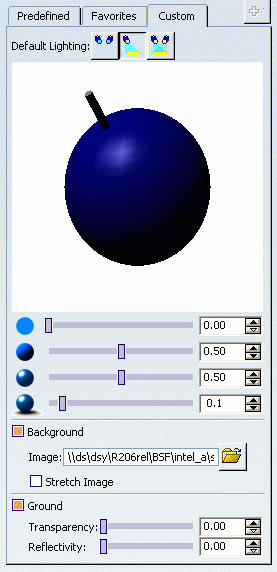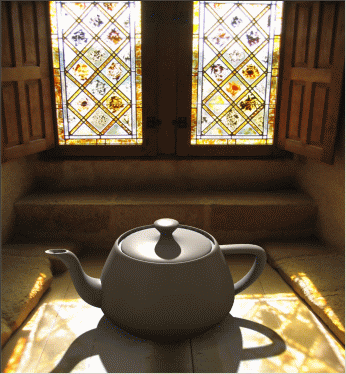Select the Custom check-box at the top of the list, in the Type field. The Scene window shows Lighting, Background and Ground options:

Note:
This window offers you a variety of options:
- No Light:

- One Light, selected by default:

- Two Lights:

Note:
- Default Lighting: defines the position, intensity and shadows of the default lights
(soft shadows give more realism to the lighting but take more
computing time). Three buttons allow you to determine the quantity
of Lighting:
Note:
You can find more information about these Lighting options in Setting Lighting Effects
, in the Infrastructure User's Guide.
Set these options according to your needs, click OK and
click Render.
The result is:

Once you have chosen or created your scene, click Render  to launch the rendering of the image. to launch the rendering of the image.
Note:
See
Using Rendering Options to modify the rendering quality, with indirect
illumination and resolution notions.
|